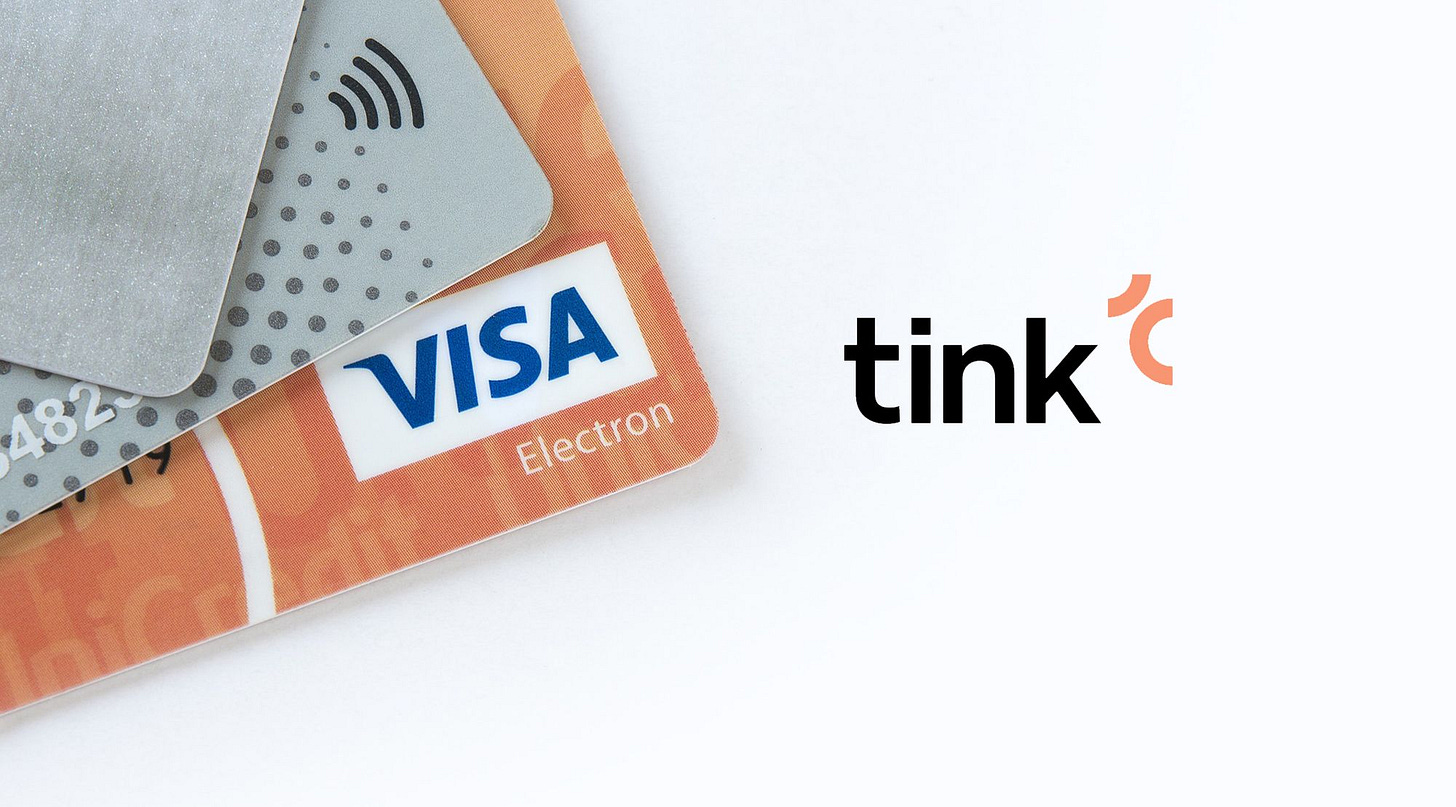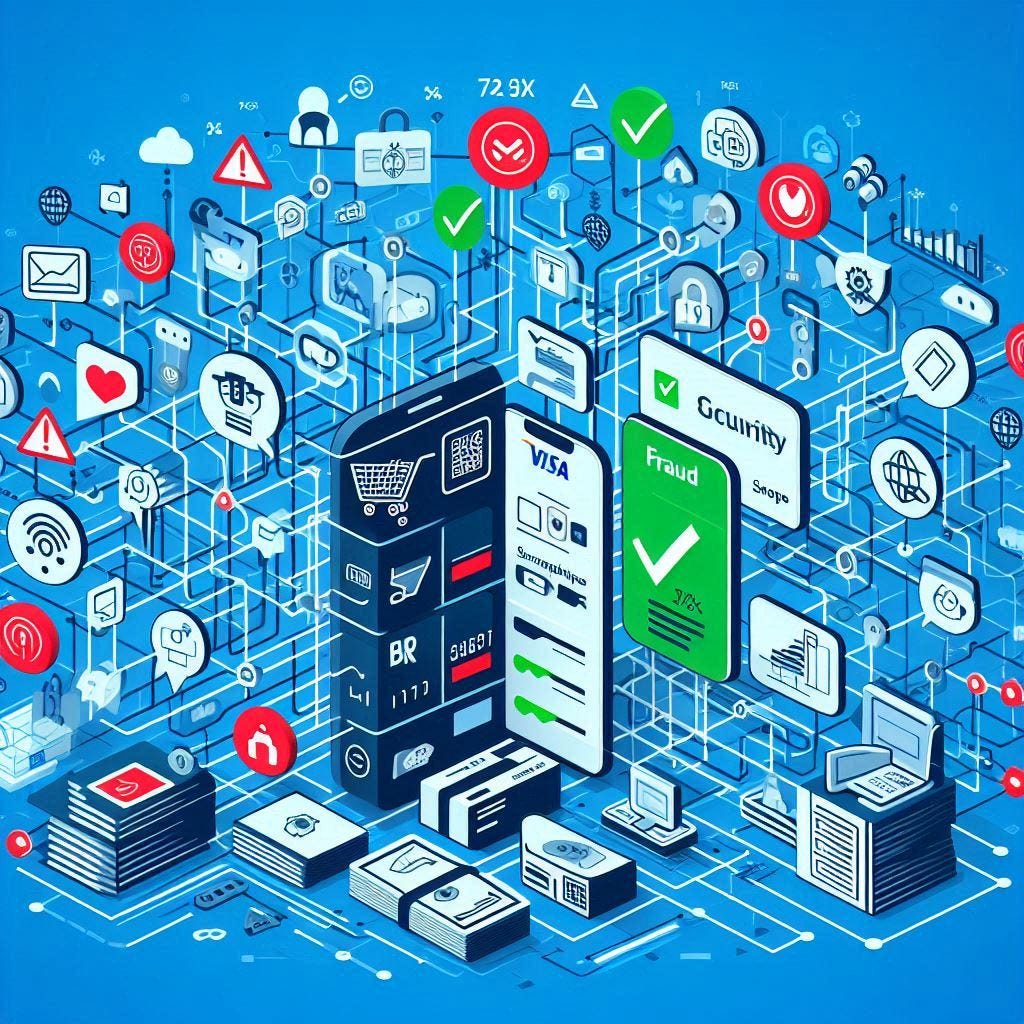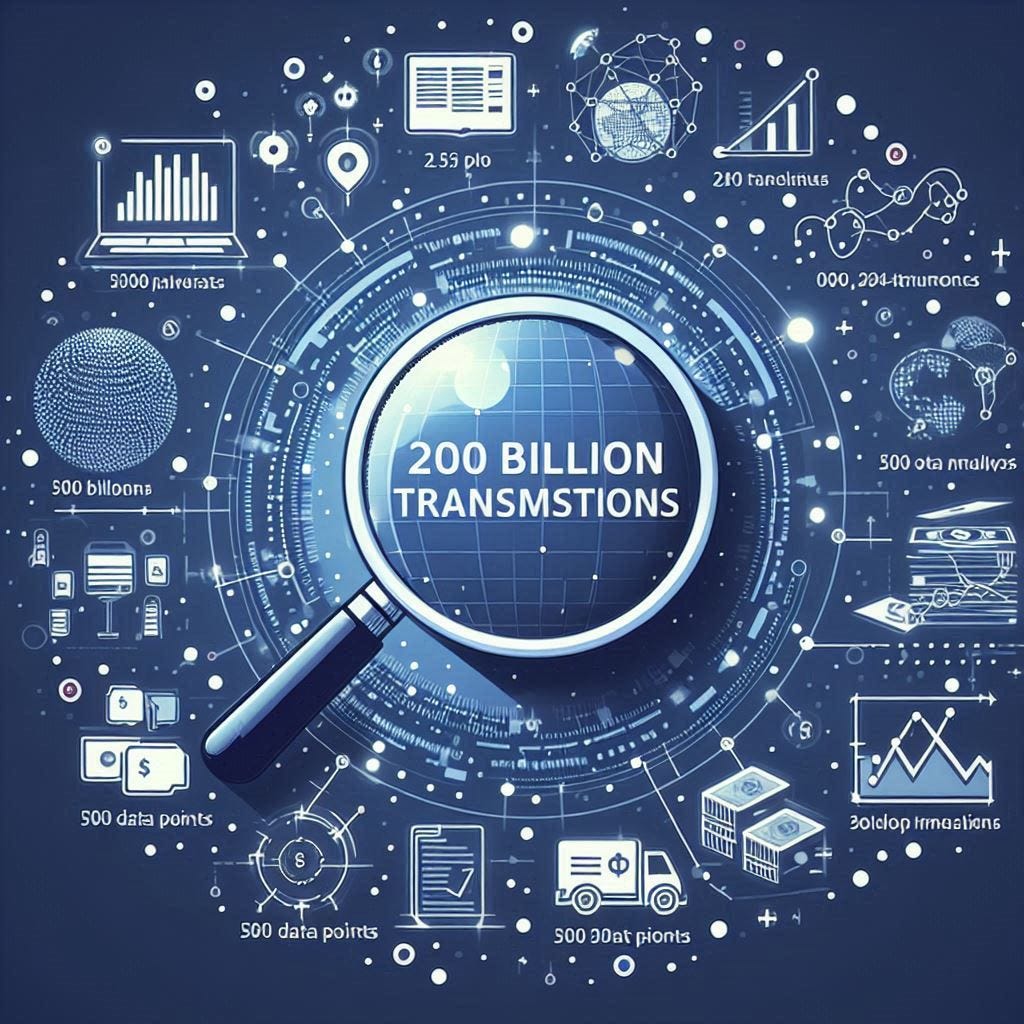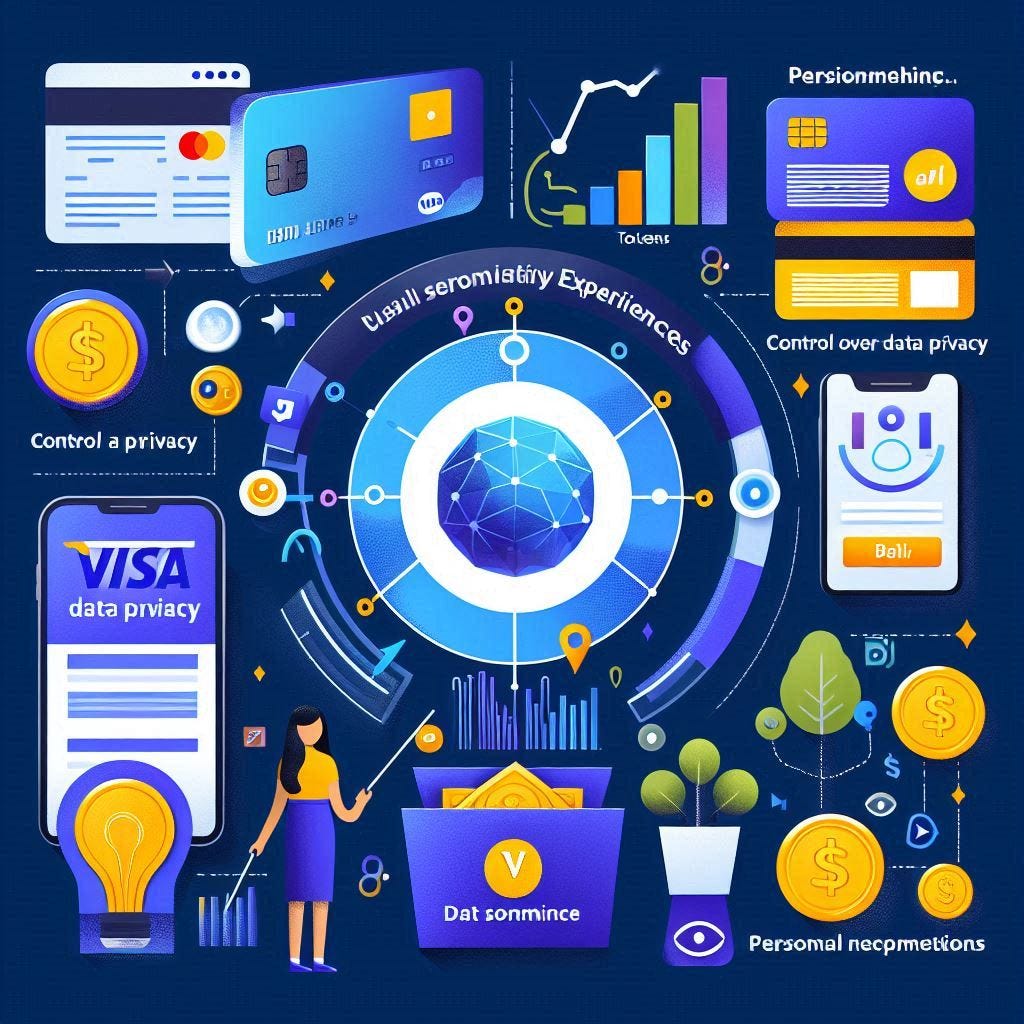Visa Reinvents cards and Unveils 7 new products for the digital age
Visa unveiled "new products" for the digital age to revolutionise the card and address the future of secure and convenient payments, with 7 product lines. But what do these mean for us ?
We live in a world where remembering 16-digit numbers is as outdated as the floppy disk. It's a brave new world where security and convenience are the dynamic duo, like peanut butter and jelly.
The payment landscape has evolved faster than a Pokémon, morphing from cash to checks to cards and now, digital wallets. Heck, we're just waiting for the day we can pay with our minds (although that might get a little messy, although Elon Musk is going full on , guns slinging with Neuralink).
So, get ready to wave goodbye to the bulging billfold and say hello to a future where your transactions are smoother than a silk scarf. Visa is the name to remember, the innovators who are making the payment world their oyster, one digital revolution at a time.
This edition of the Fintech Chronicler, dives into the 7 new product lines launched by Visa, what it means for us, the benefits (to visa mostly) and what should we be aware of.
Visa unveils New products for Digital Age
Visa's latest product announcements are nothing short of revolutionary, at least according to their press release. But let's be real, when has a company ever undersold their own innovations?
And what is this revolution according to them?
Imagine a world where a single physical card can be linked to multiple bank accounts - no more fumbling through your wallet trying to find the right one. And forget about remembering all those pesky passwords and PINs, biometrics are taking over. The real game-changer, though? Your trusty smartphone becoming your digital wallet.
Their first product unveil was the Visa's new "Flexible Credential", their attempt to reinvent the humble credit card. A one-stop-shop to choose on the fly whether you want to use your debit, credit, BNPL, or rewards program when you checkout. This product will allow a single card product to toggle between various other payment modes, essentailly controlling when and how they are used. Literally, One Card, to rule all your cards and payment methods. Wonder where they got that inspiration from.
Next we have "tap to everything". Now, this has had netizens confused. So, let me get this straight - we've all gotten used to the sweet, sweet convenience of tapping our cards for those smaller purchases, right? But now, the promise is that any NFC-enabled device can start accepting Visa tap payments? Talk about shaking up the status quo!
I can just imagine the confused masses scratching their heads, wondering, "Wait, so I can tap my phone to pay? My toaster? My pet rock?" The possibilities are endless, and the mind boggles at the thought of tapping our way through life.
But hey, if it means we can tap our way to a more seamless payment experience, I'm all for it. Just as long as I don't accidentally tap my way into paying for my neighbor's groceries. That could get real awkward, real fast.
The Visa Passkey is like a digital hall pass for the virtual world - no more juggling a million passwords, just a quick biometric scan and boom, you're in. It's like the future is finally catching up to our laziness. Now if only we could get our fridges to unlock with a retina scan too, then we'd really be living in the future!
The fourth product was really just a bundle, of Passkey with Click to Pay, making checkout process faster than a cheetah on RedBull, and as secure as Fort Knox.
Then they had their acquisition of TINK paying off, bringing the convenience of card payments to real-time account-to-account transfers. Using TINK's open banking APIs, which are pretty popular in Europe, to the rest of the globe. It's like they took the best of the digital wallet and the best of the bank account, shook them up, and poured them out as a refreshing financial smoothie for the world to enjoy.
Wrapping up the security aspect of this was yet another product bundle, Visa Protect for Account to Accoutn transfers. Now Visa protect has been around for a log while now, where they leverage the treasure trove of trasnactional data, thanks to their leadership position, to identify and stop frauds in real time.
And then of course there was the old wine in a new bottle - Data Tokens. To help tokenise not just your card details, but potentially even your transactional information.
So, now that we have the headline out of the way. Let us dive into what each of these new product launches mean for us and what should we be on the look out for?
Visa Flexible credentials
Let us talk a bit about their One Card for all Cards and Payments move.
And their claims of reinventing the card with this, which to me is a tall ask, given how the cards as we know of, has been seeing a lot of innovations, what with embedded finance, and wearable payments etc.
The hypothesis behind "One card" to rule them all
Visa's study reveals a startling discovery - more than half their customers want a single payment method that can magically transform into a Swiss Army knife of payment options at the checkout. Imagine the delight of being able to toggle between your trusty card, the trendy BNPL, split in 4, or even cashing in on those reward points, all with the flick of a finger.
It's like having a payment superhero at your fingertips, ready to save the day with the perfect payment instrument, based on some pre-configured rules. Truly, the future of payments is a choose-your-own-adventure experience, where the consumer is the master of their financial destiny, and Visa is the genie granting all their payment wishes.
The benefits to customers
During the launch of this product, Visa in a very tongue in Cheek moment said, that the future is here already, (Visa Flexible credential is live in parts of Asia), just not everywhere.
And with Affirm, the BNPL giant, Visa aims to introduce this in the USA first, followed by the rest of the world.
But as a consumer, why should I care for this?
I mean, a lot of card holders like the swag of swiping their high end, metallic card.
I know I would make the switch, if in real time, Visa's Flexible cred, tells me which card in my kitty has the best offer, that I should be making, and help me save $$$.
What should customers be aware of?
However, for that to happen, Visa would have to go through a bunch of anti competitive lawsuits in my opinion.
Why? While Visa is the dominant card network, banks do partner with other Networks like mastercard, or Discover. And Amex runs its own network and issuer.
Collating and bringing all of those information into one platform could happen either by:
consumers willingly giving up access to their emails/ SMS where these offers go to
Issuing Banks providing this through Open Banking APIs
Both of which, the networks will presumably oppose. At least till they have built a similar product offering at their end at least.
The Benefits to Visa
Visa processes close to 200 billion transactions every year, while the total card based payments processed in 2023 was around 500 Billion. Visa wants to tap into that pie, while expanding the pie to include all forms of digital payments.
More transactional data, means Visa now gets a better, and mor holistic perspective of the consumers. And can help refine their data models, which in turn they sell to issuers, for strengthening their fight against money laundering and fraudulent transactions.
But the real question is, would consumers be willing to share this information with visa? And even if they do, would competing networks and issuers take kindly to this? Especially given the long drawn anti competitive lawsuit Visa recently wiggled its way out of.
Can "Tap to Everything" revolutionise the card?
Of all the new products and services, Tap to Everything had to be my favorite.
Why?
Because this is that product, which I can see Visa has drawn a lot of inspiration from UPI in India, by NPCI.
Think about it. What does Visa have a stronghold over? Transactions that consumers make to merchants.
Which part of digital payment ecosystem that they have zero visibility over? Person to Person transfers.
Guess who has monopoly over such transactions? NPCI with their UPI rails.
And Tap to Everything ha taken a page off of NPCI's book, to tap into tat growing pie.
Now there are 4 parts to tap to everything:
Tap to device: converting any NFC enabled device into card accepting mechanism
Tap to Confirm: for identify management and authentication int he virtual world
Tap to add: a secure way of adding cards to a virtual wallet
tap to P2P: Allowing anyone to pay anyone else!
And the fourth leg is exactly where Visa, drew inspiration from NPCI.
What do I mean?
If you look at Visa's business, they have a market majority when it comes to processing card payments from Consumers to Businesses across the globe. But what they missed out on was the growing consumer to consumer digital payment wave. Something NPCI capitalised and scaled exponentially in India with UPI.
And Tap to Everything is Visa's answer to tap into that segment (pun intended), by turning everything into a machine that can accept payment from anyone. Imagine tapping to pay friends, Family or foes.
What is Visa Payment Passkey Service?
The digital age has made identity verification a real headache, with online fraud skyrocketing. Enter Visa's Payment Passkey Service: a game-changer that uses cutting-edge biometrics to confirm who you are online. No more passwords or codes – just a quick face scan or fingerprint, and you're good to go. It's not just about convenience; it's a whole new way of thinking about online security. As Visa's Forestell puts it, "we're looking at a future where paying online is both simpler and safer, no matter where you are or what device you're using". Pretty cool, right?
But the only thing which I feel a bit apprehensive about is, while my device based biometrics stores my details on my device, VISA's would ostensibly be on their servers, considering how this service promises to be omnichannel. That in my opinion forms a big privacy concern. But it is no doubt for digital commerce, especially in emerging new channels, pay and visa payment passkey can offer a frictionless and fraud less checkout process.
How will Click to pay and Passkeys change the way we transact in the virtual world?
Think about how often you've fumbled with passwords or card details while shopping online. Now, imagine that hassle vanishing. That is the thesis behind Payment Passkey Service with Click to Pay and Visa rolling it out. It's not just a minor tweak; it's a complete rethink of how we interact with our money online.
But here's the kicker: in many places, new Visa cards will come ready to use with this tech. It's like they're handing you the keys to a safer, smoother digital shopping world right out of the envelope. Makes you wonder, doesn't it? How will this reshape our expectations of online security and convenience? And what might be the ripple effects on e-commerce and digital identity as a whole?
We're not just talking about a new feature here - we're looking at a potential shift in the very fabric of online transactions. Pretty mind-bending when you think about it, right?
Visa reinvents RTP with Pay to Bank
You know, it's funny when you think about it. We've got smartphones that can do just about anything, but when it comes to moving money between bank accounts, the western world is still stuck digital dark ages. India moved on with UPI in 2016, but in most western countries, transferring between accounts still takes 2-3 working days. Wild, right?
But here's where it gets interesting: Visa's shaking things up with their 'pay by bank' system. It's like they're saying, 'Hey, why should credit cards have all the fun?' They're dragging those old-school bank transfers into the 21st century, giving them the same slick treatment we're used to with card payments.
It's not just about making things easier, though. It's about choice. Imagine a world where paying your rent, getting a loan, or splitting the dinner bill is as simple as tapping a button - no matter how you want to pay. Pretty cool, huh?
And get this: after snagging Tink, Visa's been on a roll in Europe, jazzing up banking for millions. Now they're bringing that magic to the U.S.
Finally, it won't be hard for me to explain how UPI works to people I meet from the west, who aren't a part of the fintech industry!
Visa Protect: Convenience and Security of Card payments for A2A payments
Imagine being a fly on the wall at Visa's headquarters. You'd see an astounding dance of numbers - 200 billion transactions a year, each one dissected into 500 data points. It's like they're speed-reading the financial pulse of the planet in real-time. Mind-blowing, isn't it?
But here's where it gets really interesting. Visa's taking this massive brain they've built for card transactions and applying it to the wild west of account-to-account payments. It's like they're teaching an old dog some seriously impressive new tricks.
Think about it. We're talking about a system that's already catching 60% of fraud that banks were missing entirely. That's not just an improvement - it's a game-changer. It makes you wonder, doesn't it? How much fraud is slipping through the cracks right now? And what could this mean for the future of financial security?
They're piloting this in the UK and it's already live in Latin America. It's like watching a financial revolution unfold in real-time. What might happen when this goes global? Could we be looking at a future where financial fraud becomes as rare as a typewriter in a tech startup?
It's not just about stopping bad guys, though. It's about trust. If we can trust our financial systems more, how might that change the way we interact with money? Could it lead to more financial inclusion? More economic stability?
We're not just talking about a new security feature here. We're potentially witnessing a fundamental shift in the bedrock of our financial systems.
Visa Data Tokens
Imagine a world where your payment data isn't just a security risk, but a key to unlock personalized experiences. That's the future Visa's painting with their data tokens.
For a decade, they've been playing hide-and-seek with your card info, keeping it safe from prying eyes. Now, they're flipping the script. What if you could control who sees your data, and use it to get tailored recommendations while you shop?
It's like having a personal shopper in your pocket, powered by AI and your own spending habits. But here's the kicker - you're in the driver's seat. Share your data, see where it goes, change your mind? No problem.
This isn't just about shopping. It's about redefining our relationship with data in the age of AI. Are we on the cusp of a new era where privacy and personalization can coexist? Where our data becomes a currency we can spend wisely?
It's a bold vision. One that could reshape how we think about privacy, commerce, and the value of our digital footprint.











